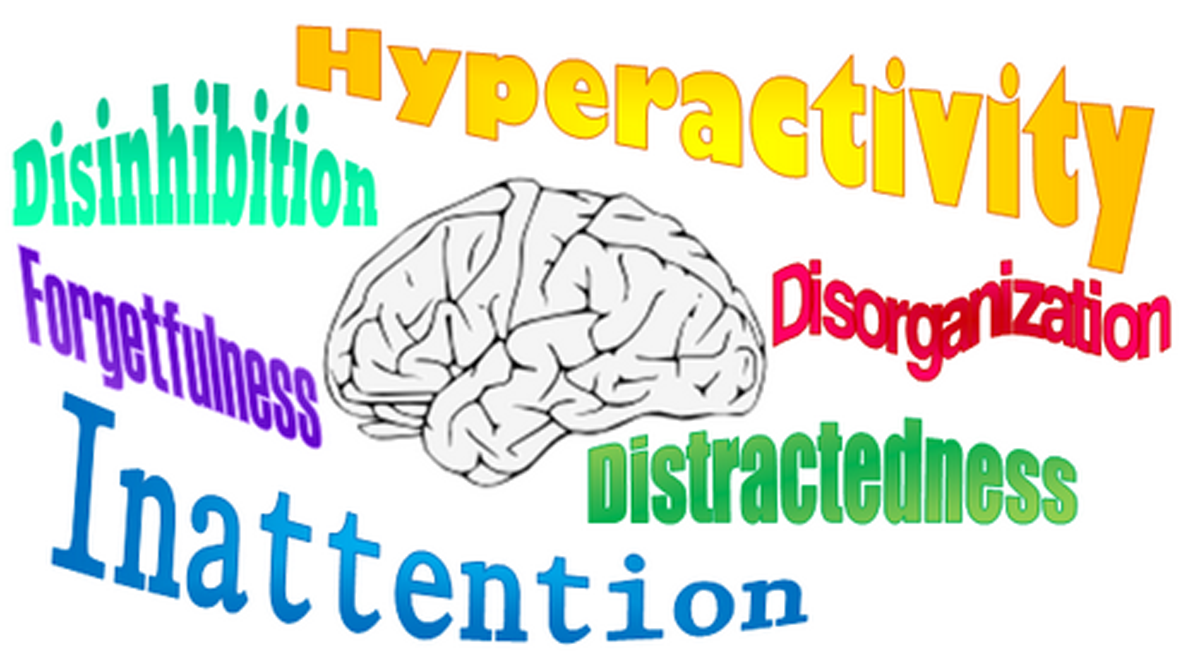Table of Contents
As of May 2013, mental health professionals in the United States use the American Psychiatric Association's Diagnostic and Statistical Manual, Fifth edition (DSM-5) to diagnose mental disorders, including ADHD.

Diagnostic criteria from two different groups (inattention and hyperactivity and impulsivity) must be met for a person to qualify for the ADHD diagnosis, in addition to some other more general criteria. Let's take a look.
Inattention
Six or more symptoms must be displayed by children up to 16, and five by people aged 17 and up. The symptoms must have been present for six months or more and be age-inappropriate.
- Often fails to pay close attention to detail and makes careless mistakes in various contexts.
- Often can't concentrate on the task engaged in.
- Often does not seem to listen when spoken to.
- Often fails to follow through on instructions — gets side-tracked.
- Poor organizational skills.
- Dislikes or avoids tasks that require mental effort over a period of time.
- Tends to lose things he or she needs.
- Easily distracted.
- Forgetful in daily activities.
Hyperactivity And Impulsivity
Six or more of these symptoms are required for kids up to 16, and five or more for those who are aged 17 and up. The symptoms have to be present for a minimum of six months and must be disruptive or developmentally inappropriate for the diagnosis to be made.
- Fidgets with hands or feet, taps, or squirms in seat.
- Sets up in situations where straying seated is expected.
- Often runs or climbs in inappropriate situations.
- Unable to play or participate in recreational activities quietly
- Is often "on the go" acting as if "driven by a motor".
- Tends to talk excessively.
- Often answers before a question has been completed.
- Has trouble waiting his or her turn.
- Interrupts or intrudes on others.
Additional ADHD Symptoms
Besides displaying the required number of symptoms from the two lists above, the following must also apply for an ADHD diagnosis to be made:
- Several inattentive or hyperactive-impulsive symptoms should have been present before age 12.
- Several symptoms are present regardless of context (not only, for example, at school).
- It is clear that the symptoms interfere with the person's daily life.
- The symptoms cannot be explained by another mental disorder.
There are three different types of ADHD. A combined presentation is when the person has enough symptoms from both inattentive and hyperactive/impulsive diagnostic criteria lists. A predominantly inattentive presentation applies when the sufficient number of symptoms were checked off on the inattentive list, but not on the hyperactive/impulsive checklist for the past six months. With a predominantly hyperactive/impulsive presentation, the reverse is true. It is important to know that symptoms, and thus the type of ADHD a person has, can change over time.
Treatment Options
A disorder with the characteristics of ADHD was described as early as 1798 — Attention Deficit Hyperactivity Disorder is not, contrary to popular belief, an exclusively contemporary phenomenon. What is new is that ADHD can now be managed with medication and alternative methods.
Research shows that treatment with Ritalin, a central nervous system stimulant that affects the chemicals in the brain that are related to impulse control and hyperactivity, is very effective. Around 80 percent of patients show improvement with Ritalin.
On the downside, the drug has been shown to be habit-forming and there are some potential side effects. They include nausea, dizziness, and a loss of appetite. In some cases, as with any medication, severe adverse reactions can occur. They include breathing difficulties, urticaria, and dangerously high blood pressure.
Ritalin isn't presented as the "cure-all" for ADHD everywhere. In the Netherlands, where medication is often seen as a last resort, doctors and teachers tend emphasize the need for structure in the life of a child with ADHD, and special schools or additional support within regular schools can be provided. Ritalin may or may not enter the picture.
In the United Kingdom, therapy and behavior management techniques are given as an alternative or addition to the medication commonly offered for ADHD, and the National Health Service also stresses the need for parent training programs.
Healthy sleep patterns, a balanced diet, and regular exercise can help a person with ADHD feel better and perform better. Some adults with ADHD and ADHD parents report that fish oil, rich in Omega 3 fatty acids, greatly helps the functioning of people with Attention Deficit Hyperactivity disorder. Though the evidence that Omega 3 fatty acids help is far from conclusive, people who were recently diagnosed may want to look into taking them as a trial.
- Photo courtesy of campusguy by Photobucket : media.photobucket.com/user/campusguy/media/adhd_kids.jpg.html?filters[term]=adhd&filters[primary]=images&sort=1&o=30
- Photo courtesy of Psyc3330 w11 by Wikimedia Commons : commons.wikimedia.org/wiki/File:Proposed_Symptoms_of_ADHD.PNG
- www.cdc.gov/ncbddd/adhd/diagnosis.html
- www.psyq.nl/Programma/Kenniscentrum-ADHD-bij-volwassenen/Informatie-ADHD/Congresverslagen/ADHD-wat-is-dat-eigenlijk
- www.ncbi.nlm.nih.gov/pmc/articles/PMC3000907/
- www.cdc.gov/ncbddd/adhd/data.html
- www.nhs.uk/Conditions/Attention-deficit-hyperactivity-disorder/Pages/Treatment.aspx

